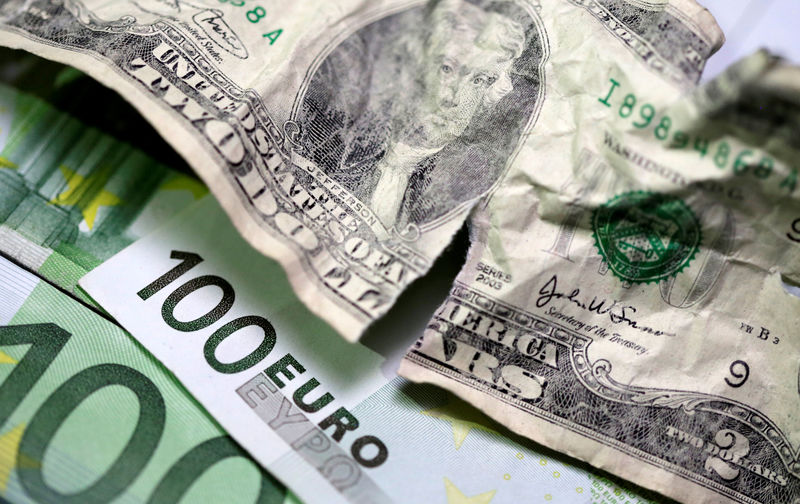US stock futures flounder amid tech weakness, Fed caution
Investing.com - The U.S. dollar rose once again Tuesday, while the euro slipped further in the wake of the U.S.-EU trade agreement, ahead of the start of this week’s Federal Reserve meeting.
At 04:10 ET (08:10 GMT), the Dollar Index, which tracks the greenback against a basket of six other currencies, gained 0.2% to 98.607, adding to the previous session’s gains.
Dollar back in favor
The U.S. currency is back in favor after the announcement of a trade deal between the U.S. and the European Union,, with the agreement providing for an import tariff of 15% on EU goods.
The EU also agreed to invest about $600 billion in the United States and dramatically step up purchases of American energy and military equipment.
Attention now turns to talks between the U.S. and China in Sweden, where media reports have suggested that the world’s two largest economies may decide to extend a trade truce.
With the trade turmoil seemingly over, attention is now turning to the deluge of economic data due this week, as the Federal Reserve starts its latest two-day policy meeting.
Among the headlining figures on Tuesday will be a measure of job openings and labor turnover, a proxy for labor demand, the so-called JOLTS survey.
The numbers are seen offering some insight into the health of the U.S. labor market, ahead of the all-important July jobs report on Friday.
Elsewhere, the Conference Board’s metric of consumer confidence for July is also due out, with economists expecting it to tick up compared to the prior month.
“Ahead of tomorrow’s FOMC meeting, which could also prove dollar positive, today sees the release of US JOLTS job opening data and also July consumer confidence. The former is expected to show some stability (at around the 7500k mark) and the latter is expected to pick up in line with the strong stock market,” said analysts at ING, in a note.
Euro continues to retreat
In Europe, EUR/USD fell 0.3% to 1.1559, with the single currency retreating further after sliding 1.3% in the previous session, its sharpest one-day percentage fall in over two months.
Worries are mounting that the European Union has accepted the worst end of the trade agreement, with French Prime Minister Francois Bayrou calling it “a dark day” and German Chancellor Friedrich Merz saying his economy would suffer "significant" damage.
“We have been arguing for some time that EUR/USD could come under pressure this quarter, and arguably, EUR/USD is now in a more fragile position than we had been expecting ahead of a big week for event risk,” said ING.
“EUR/USD price action remains very poor. And if it can’t rally above 1.1600/1625 on any good news today, it could well take out support – both at 1.1555 and 1.1500.”
GBP/USD dropped 0.2% to 1.3335, with sterling falling to a two-month low.
“There is a technical case now for GBP/USD to trade down to the 1.3150 area. That is our preference in a week where we think the event risks are skewed to the positive for the dollar,” ING added.
Yen quiet ahead of BOJ meeting
Elsewhere, USD/JPY traded 0.1% lower to 148.41, trading in a quiet manner after rising in the previous session.
The Bank of Japan is expected to hold interest rates steady on Thursday amid global trade certainty and domestic political flux, but analysts say the U.S.-Japan trade deal signed last week could provide some room to policymakers to raise rates again later this year.
Still, investor sentiment in Japan remained cautious amid ongoing political uncertainty, following the ruling coalition’s defeat in last week’s upper house elections and speculation over Prime Minister Shigeru Ishiba’s potential resignation.
AUD/USD dropped 0.3% to 0.6503, after falling 0.7% on Monday, while USD/CNY traded flat at 7.1777.
